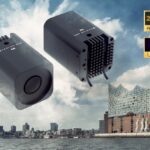Calrec has announced that it has expanded its global remote commissioning, training and product demonstration capabilities as the media and entertainment space continues to embrace remote working.
Calrec offers remote commissioning, training and demonstrations across both its headless and physical products. For the headless range, Calrec’s browser-based Assist application provides control and setup for Type R for Radio and Type R for TV, as well as Calrec’s VP2 headless console and RP1 remote production core. All can be commissioned using Assist, with remote training and demonstration also possible using the same workflows.
John Herman, one of Calrec’s service and support Engineers in the US, said: “We have commissioned multiple installations remotely in addition to product demos and training. Calrec already had these remote workflows built into its equipment, but we very quickly recognised an increased need for these services as soon as the severity and reach of the pandemic became clear.”
Calrec Assist is easy to set up. Users simply type in the IP address that is served from the centrally located core in a web browser and they have access to all console controls via a clearly laid out graphical interface.
Physical consoles like the Apollo and Artemis also use Assist as a remote tool, and Type R hardware can access Calrec’s Configure and Connect Stream Manager apps to provide comprehensive remote commissioning and training.
Billy Kalenda, chief engineer at KSLA in Louisiana, commented: “Our industry changes on a whim; Covid hit and it changed everything. Part of that change is how we interact and communicate with our equipment vendors for service and support. It now requires us to do so completely remotely via remote computer access and telephone. A bright spot was how John Herman helped us here at our station during the commissioning of our new Type R audio console. John helped us get our system built and in a usable format very quickly so that we could get on air on time and fully on budget.”
Herman added: “When we first started offering remote commissioning, it was a case of helping get our customers to get on air with their new product as fast as possible. We had to be flexible and quick to keep the process moving, and we’ve continued to adapt and refine workflows across remote demonstrations, commissioning and training. Now we have proven the concept, we feel it will be part of the process for many customers in the future.”





